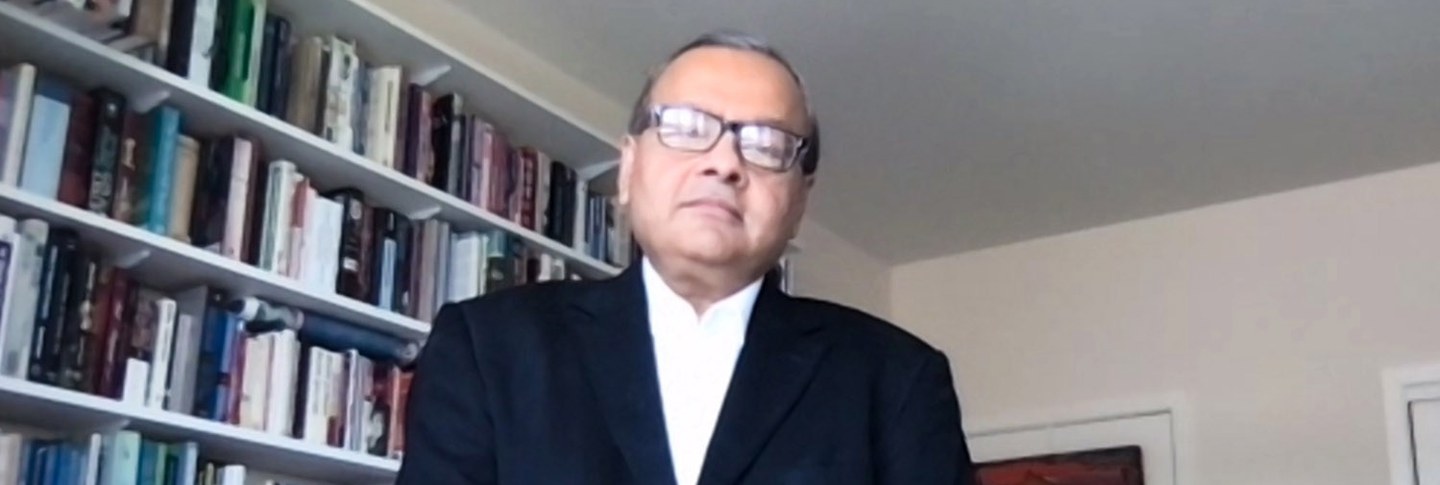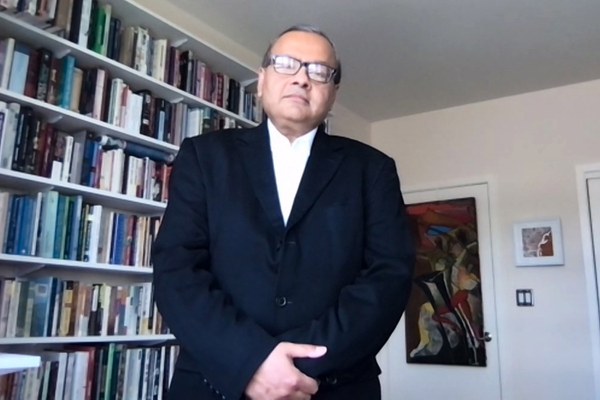Arijit Sen, associate professor of architecture and urban studies at University of Wisconsin–Milwaukee, is spring 2021 Mellon Fellow in Urban Landscape Studies. His research report, “Landscapes of Hope,” described histories and practices of hope and resilience on the North Side of Milwaukee.
Q&A with Arijit Sen
How have Milwaukee and its North Side neighborhood changed over the years?
By the middle of the eighteenth century, Indigenous groups such as the Potawatomi, Odawa, and Ojibwe lived in the region and traded with French fur traders from the north. By the late nineteenth century, the Indigenous groups were grappling with treaties of dispossession and removal and confined to reservations. Milwaukee had become an industrial metropolis. In the early twentieth century, a large immigrant population—mostly from Germany, Poland, and Ireland—worked in breweries, tanneries, and several other kinds of industrial production. In the 1960s, with the second wave of migration from the South, the number of Black people moving to Milwaukee increased dramatically—many came from Chicago for the industrial jobs.
As early as the 1930s, segregative real estate practices were implemented, like redlining, which demarcated and devalued neighborhoods being “infiltrated,” in the case of Milwaukee by Jewish, Italian, Mexican, and Black residents. In the 1940s and 1950s, Black homeowners/tenants in particular were granted fewer loans, and many neighborhoods had racial covenants that prevented you from renting or selling property to a Black person. As a result, neighborhoods like the North Side became extremely segregated, predominantly occupied by Black residents. By the 1960s and 1970s, these segregated neighborhoods were overcrowded, so the federal and state governments started calling them slums, which enabled them to carry out urban renewal projects and freeway extensions. These projects brought a lot of injustice to the North Side that destroyed its vibrancy, and the effects are still being felt today.
How is hope practiced in the North Side?
The language we use in academic and professional circles about neighborhoods like the North Side is often negative and doesn’t fit the imagination of the residents. They know there is crime and there are problems in their neighborhood, but they get up every day and live there, which I see as enacting multiple forms of hope. The first form is the traditional mythology of the American dream, aspiring to upward mobility by accumulating wealth. A house in decline—what urban designers and city officials might call “blighted”—appears antithetical to this kind of hope, but this fails to account for the person who still resides in that house and manages to manifest that life in other forms, just perhaps not necessarily through the outward appearance of the house. That resident is probably also practicing hope in another way, one that is a form of survival. This second form is an ethical practice the residents call care. It is a political practice of relationships and relational systems, meaning one individual having access to resources impacts everyone related to that individual, too. It means that even though you might be poor or have lost somebody, you can still survive through the hope of relationship with one another, surrounded by a community that cares for you.
One tangible manifestation of hope as care and survival can be seen in the interstitial spaces of this landscape. Focus on the spaces between private and public, the unoccupied parts of the land, and we see they’re sometimes taken over by the community and made into common spaces that foster relationships of care. Urban gardens on vacant city lots, grown not to sell but to give food to one another, are an example. In Milwaukee, Peace Gardens are another example: roadside memorials to those lost to violence or the police, sown and grown by the community near the location of the homicide or traffic death. There are no specific rules or regulations for these in-between spaces, so the city does not immediately crack down, though often they eventually do. But while they exist, they produce this relational notion of hope among the community.
How does telling the story of the North Side through public history reshape our understanding of places like it?
As a vernacular architecture historian, I learned from our North Side neighbors that we just didn’t have a language to talk about spaces in apparent decline, and I’ve been grateful to the Garden and Landscape Studies fellows for helping me develop this new language. We often focus on physical built space, and from that perspective, the story of North Side is that the Germans built wonderful houses the Black folks couldn’t maintain, and the neighborhood became blighted and poor. Studying the interstitial spaces and paying attention to bodies, behaviors, and intangible relationships offers a new perspective that might promote a different model of how to rebuild. This project is also about resilience and the social infrastructure needed to generate that, and we are trying to show this wisdom already exists in the North Side.
May Wang is postgraduate writing and reporting fellow at Dumbarton Oaks. Photo by Richard Tong, postgraduate digital media fellow.

